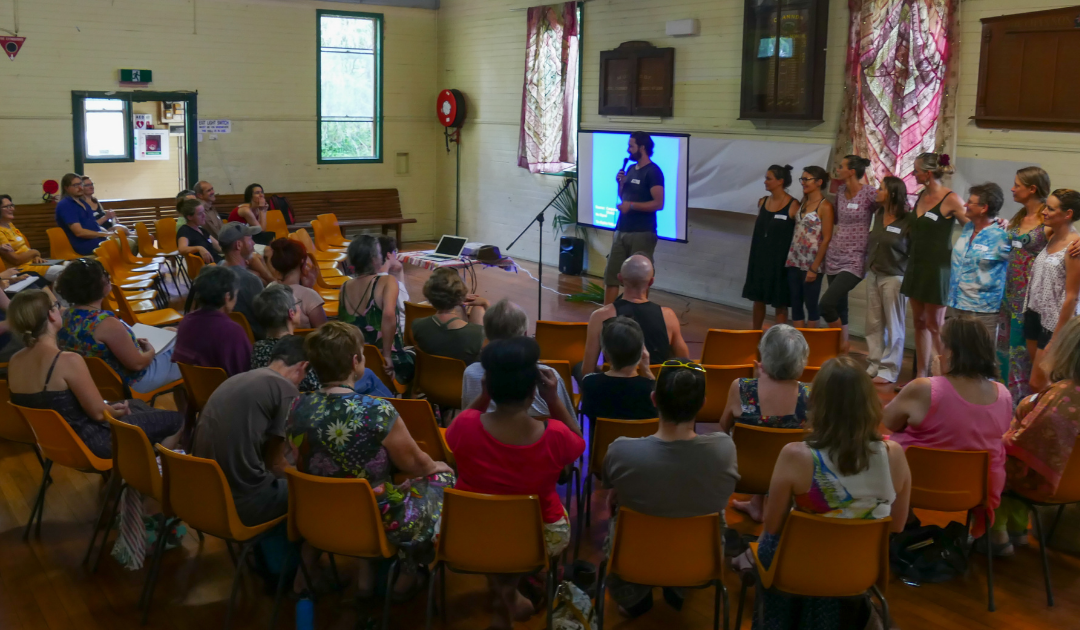
The Arising of The Channon Resilience Movement
The dramatic Mt Nardi/Terania fires of November 2019 made our small rural community of The
Channon in Northern NSW feel like climate change was now very real and personal. Our
rainforests were burning – the rainforests that had been protected from logging in the historic
Terania Creek protests 40 years ago.
What happened here was a remarkable community response to help defend our neighbours and
the forest, always in connection with the local RFS.
We experienced how overcoming adversity creates deep cohesion, connection and indeed joy
within a community.
It was a natural progression to turn our focus to the bigger picture of climate change and
compounding crises, and the desire to build broad resilience as a community ahead of time.
So a small group of us created a half-day workshop. We called it “The Channon Workshop:
Enhancing Community Resilience through Connection and Action”.
When the day came our local hall was buzzing with over 100 local people. We began with
gratitude.
Our first aim was to help people really “get” the extremity of the situation we are facing, increase
community cohesion and belonging, and deepen people’s motivation and inspiration for action
and working together.
Information about the global situation was focussed down to likely local challenges, such as
more frequent and extreme weather events.
Through interactive group exercises we gauged how we saw our current ability to respond to
examples of compounding scenarios. This was fascinating and confronting, and feelings of fear,
grief, despair were acknowledged.
Shifting our perspective, we recognised that we only experience these feelings because of our
deep caring and interconnectedness with each other and the natural world. We shared inspiring
stories of community response to adversity from around the world to spark our creative minds.
It was time to move into action by envisioning what it would look like to achieve a significantly
more resilient community by the year 2030.
Ideas were “pattern mapped” into interest areas. Each became a focus group. The aim was to
connect, brainstorm the topic and set a temporary convenor and date for their next meeting, so
they could self-organise from there.
It was a conscious decision to allow these groupings to arise from the community, rather than
pre-dictate the categories needed to create resilience.
The following action groups emerged, with the understanding that these were simply a starting
point, and would evolve over time:
Food: food gardens/forests, preserving, animal management, soil carbon.
Water: water collection, watershed restoration, drought proofing, education.
Fire Preparedness: local fire trails, community equipment, fire plans.
Community Organisation: emergency response plans, sharing resources, workdays, existing
organisations.
Political Action: climate action group, influencing policy, mobilising action, civil disobedience.
People Care: ritual, healing, music, emotional first aid, mental health.
First Nations: indigenous fire/water practices, culture, food, local history.
Youth: youth-led climate action group; youth space.
Shared Learning: The Channon Resilience Hub as an umbrella communication hub.
Only a few weeks later, COVID19 was on our doorstep, so action group meetings continued
using online technology. A People Care sub-group formed for community response to the
pandemic.
Our community will continue to explore and grow our resilience in its many facets through
shared intent and learning. It is an amazing time to be alive and participating.
Article by Terri Nicholson originally published in Dumbo Feather

Recent Comments